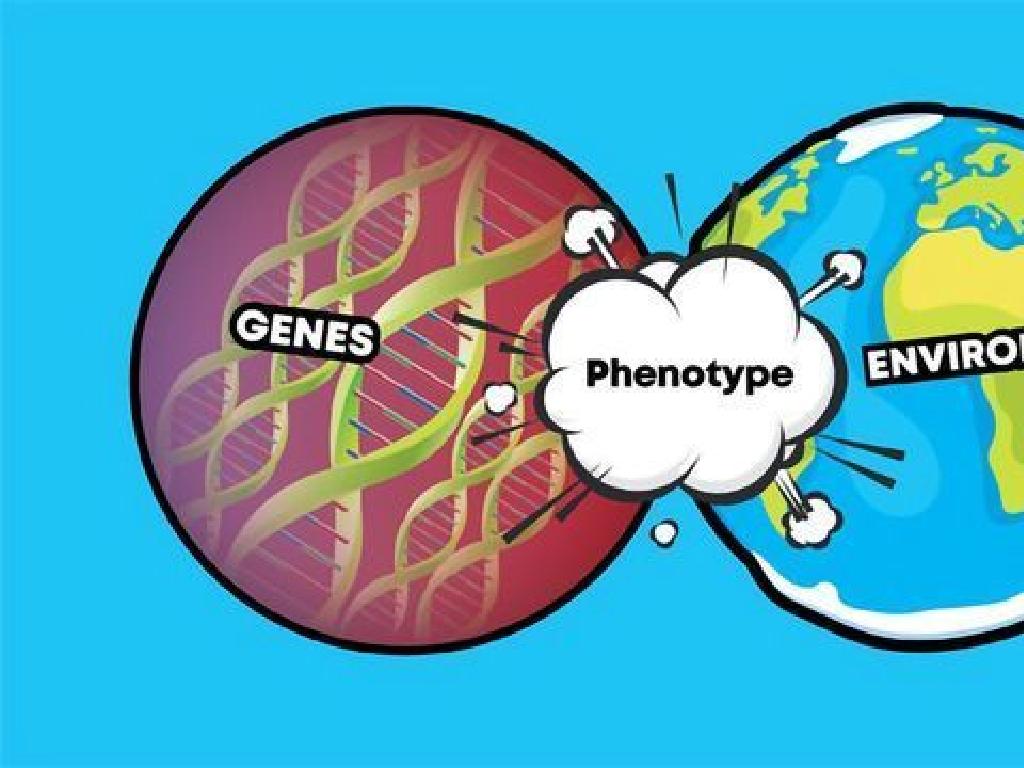Identify Reactants And Products
Subject: Science
Grade: Seventh grade
Topic: Chemical Reactions
Please LOG IN to download the presentation. Access is available to registered users only.
View More Content
Introduction to Chemical Reactions
– Define a chemical reaction
– A process where substances change into new substances with different properties
– Daily life chemical reactions
– Baking bread, rusting iron, and digesting food
– Significance of chemical reactions
– Chemical reactions are essential for life and industrial processes
– Reactants and products concept
– Reactants are substances that start a reaction, products are what they become
|
Begin the lesson by defining a chemical reaction as a transformation where reactants turn into products, resulting in substances with new properties. Provide relatable examples such as baking, where ingredients (reactants) turn into bread (product), or rust forming on iron. Emphasize the importance of chemical reactions in everyday life and in various industries, such as pharmaceuticals, agriculture, and energy. Explain that understanding reactants and products helps us grasp how these transformations occur and predict the outcomes of reactions. Encourage students to think of more examples and to consider the role of energy in these processes.
Reactants and Products in Chemical Reactions
– Reactants: Starting substances
– Substances that exist before a chemical reaction takes place.
– Products: Substances formed
– New substances created as a result of a chemical reaction.
– Conservation of Mass law
– Matter is neither created nor destroyed in a chemical reaction.
– Balancing reactants and products
|
This slide introduces the basic concepts of reactants and products within the framework of chemical reactions. Reactants are the substances that are used up during a chemical reaction to create new substances called products. It’s crucial for students to understand that in a chemical reaction, the total mass of the reactants equals the total mass of the products, illustrating the Law of Conservation of Mass. Emphasize that chemical equations must be balanced to reflect this law, meaning the number of atoms for each element should be the same on both sides of the equation. Provide examples of simple chemical reactions and guide students to identify the reactants and products in each. Encourage them to practice balancing chemical equations as homework to reinforce this concept.
Visualizing Chemical Reactions
– Symbols in chemical equations
– Elements are represented by symbols, compounds by formulas.
– Simple chemical equation examples
– H2 + O2 -> H2O demonstrates how hydrogen and oxygen form water.
– Reactants and products identification
– Reactants are substances before the arrow, products after.
– Practice with common reactions
– Use equations like 2H2 + O2 -> 2H2O to identify reactants and products.
|
This slide introduces students to the basics of visualizing chemical reactions through the use of symbols and formulas. Start by explaining the symbols for elements and how they combine to form compound formulas. Show simple chemical equations as examples, such as the formation of water from hydrogen and oxygen. Teach students to identify reactants, which are the starting substances, and products, which are the results of the reaction. Encourage students to practice by writing out equations and labeling the reactants and products. This will help them understand the concept of conservation of mass in chemical reactions.
Balancing Chemical Equations
– Purpose of balancing equations
– To reflect the Law of Conservation of Mass
– Rules for balancing
– Use coefficients to equalize atom numbers
– Group practice on equations
– We’ll balance H2 + O2 -> H2O as a class
– Understanding conservation of mass
– Matter is neither created nor destroyed
|
Balancing chemical equations is essential because it adheres to the Law of Conservation of Mass, which states that matter cannot be created or destroyed in a chemical reaction. This means the number of atoms for each element must be the same on both sides of the equation. Teach students the basic rules for balancing equations, such as starting with the most complex molecule and using coefficients to make the number of atoms on each side equal. Engage the class with a simple practice equation, like combining hydrogen and oxygen to form water, and balance it together. Emphasize the concept of conservation of mass throughout the process. This activity will help students grasp the concept of balancing equations and its importance in representing chemical reactions accurately.
Class Activity: Reactants and Products
– Identify reactants and products
– Work in pairs on equations
Pair up and solve given chemical equations.
– Share and discuss answers
Present your findings to the class.
– Understand reaction components
Reactants start the reaction, products result from it.
|
This activity is designed to help students actively engage with the concept of reactants and products in chemical reactions. Provide a set of chemical equations for students to work on in pairs, fostering collaboration and peer learning. After solving the equations, each pair will share their answers with the class, promoting discussion and reinforcing their understanding. As a teacher, facilitate the discussion by asking probing questions and clarifying any misconceptions. Possible activities could include creating a visual representation of a chemical reaction, writing a story that incorporates the concept of reactants and products, or even a simple matching exercise with reactants and their corresponding products.
Photosynthesis: Reactants and Products
– Photosynthesis as a reaction
– A process plants use to make food and oxygen
– Reactants in photosynthesis
– Sunlight, water, and carbon dioxide are reactants
– Products of photosynthesis
– Glucose and oxygen are the products
– Significance for Earth’s life
– Essential for oxygen and food supply
|
This slide aims to illustrate the concept of reactants and products through the real-life example of photosynthesis. Photosynthesis is a fundamental chemical reaction carried out by plants, where they convert sunlight, water, and carbon dioxide into glucose and oxygen. The reactants, or starting substances, are sunlight, water (H2O), and carbon dioxide (CO2). The products, or substances produced, are glucose (C6H12O6) and oxygen (O2). This reaction is crucial for life on Earth as it provides the oxygen we breathe and the glucose that serves as an energy source for plants. Encourage students to think about how this process supports not just plants, but all life on Earth, and discuss the broader implications of this reaction on our planet’s ecosystem.
Conclusion: Reactants and Products in Chemical Reactions
– Recap of reactants and products
– Reactants are substances that start a chemical reaction, products are what you get after the reaction.
– Significance in chemical reactions
– Understanding them is crucial for predicting chemical reaction outcomes.
– Preview of reaction types
– Next, we’ll explore synthesis, decomposition, and more.
– Encouragement for curiosity
|
As we wrap up today’s lesson, remind students of the importance of identifying reactants and products in a chemical reaction. This knowledge is fundamental to understanding how substances interact and change during reactions. Emphasize that being able to predict the outcome of a reaction is a key skill in chemistry. Give a brief teaser about the next lesson, which will delve into the different types of chemical reactions, such as synthesis, decomposition, single replacement, and double replacement reactions. Encourage students to be curious and to think of examples of chemical reactions they encounter in their daily lives.
Homework: Daily Chemical Reactions
– Find 3 daily chemical reactions
– Write down reactants and products
– Reactants are substances that start a chemical reaction, products are what you get after the reaction.
– Understand each reaction’s process
– Example: Baking soda and vinegar react to produce carbon dioxide and water.
– Discuss findings in next class
|
This assignment is designed to help students recognize and understand chemical reactions in their everyday lives. By identifying reactants and products, students will learn to observe the transformation that occurs during a chemical reaction. Examples of daily chemical reactions include cooking, rusting of iron, and the use of batteries. Encourage students to think about the changes they observe and what substances are involved. In the next class, students should be ready to discuss how they identified the reactants and products and what clues helped them understand the reaction process. This will enhance their critical thinking and observational skills.






